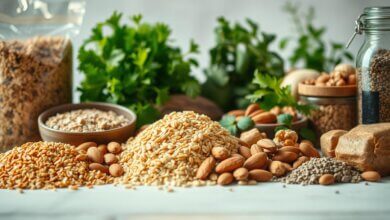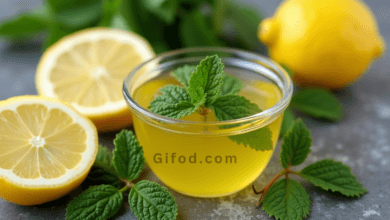The Ultimate Guide to Madeline Cookies Recipe Using Cream: Decadence in Every Bite 25

Madeleine cookies, those delicate, shell-shaped French cakes, are a timeless classic. While many recipes exist, the secret to truly exceptional Madeleines often lies in one key ingredient: cream. This article delves deep into the world of Madeline cookies recipe using cream, exploring the science, the variations, and providing a foolproof recipe for achieving that perfect, melt-in-your-mouth texture. We’ll cover everything from choosing the right ingredients to mastering the baking techniques, ensuring your Madeleines are a resounding success every time. And for further culinary exploration, be sure to visit gifod.com.
The Magic of Cream in Madeline Cookies: Why It Matters
The addition of cream, specifically heavy cream or crème fraîche, to a Madeline cookie recipe isn’t just about adding richness; it fundamentally alters the texture and flavor profile. Here’s how:
- Fat Content: Heavy cream boasts a high fat content (typically 36-40%). This fat contributes significantly to the tenderness of the Madeleines. The fat molecules coat the gluten strands in the flour, preventing them from forming long, tough networks. This results in a more delicate, crumbly texture.
- Moisture: Cream adds moisture to the batter, which is crucial for creating a soft, cake-like interior. This moisture also helps to create steam during baking, contributing to the characteristic hump of the Madeleine.
- Flavor Enhancement: The subtle sweetness and rich, dairy notes of cream enhance the overall flavor of the Madeleines. It complements the traditional flavors of vanilla and lemon (or orange) zest beautifully, creating a more complex and satisfying taste experience.
- Browning: The milk solids in cream contribute to the Maillard reaction, a chemical process responsible for the browning and development of complex flavors in baked goods. This gives the Madeleines their beautiful golden-brown color.
- Emulsification: Cream acts as an emulsifier, helping to blend the fat and water-based ingredients in the batter into a smooth, homogenous mixture. This ensures a consistent texture throughout the cookie.
Choosing the Right Cream: Heavy Cream vs. Crème Fraîche
While both heavy cream and crème fraîche can be used in a Madeline cookies recipe using cream, they offer slightly different results:
- Heavy Cream (Whipping Cream): This is the most readily available option and provides a classic, rich flavor and tender texture. Look for heavy cream with a fat content of at least 36%.
- Crème Fraîche: Crème fraîche is a cultured cream with a slightly tangy flavor and a thicker consistency than heavy cream. It adds a subtle tanginess that complements the sweetness of the Madeleines, creating a more nuanced flavor profile. It also contributes to a slightly denser, more moist texture.
The choice between the two ultimately comes down to personal preference. If you prefer a classic, rich flavor, heavy cream is the way to go. If you enjoy a slightly tangy, more complex flavor, opt for crème fraîche. Experiment with both to discover your favorite!
The Essential Ingredients for Perfect Madeleines (Beyond Cream)
While cream is the star of our show, other ingredients play crucial roles in creating perfect Madeleines:
- Eggs: Eggs provide structure, richness, and leavening. Use large, fresh eggs at room temperature for best results.
- Sugar: Granulated sugar provides sweetness and contributes to the texture. Some recipes also use a small amount of brown sugar for added moisture and a hint of caramel flavor.
- Flour: All-purpose flour is typically used. Ensure it’s properly measured (preferably by weight) for consistent results. Some recipes might call for cake flour, which results in an even more tender crumb, but all-purpose flour works perfectly fine.
- Butter: Unsalted butter, browned (beurre noisette), is a key element in many Madeline recipes. Browning the butter adds a nutty, complex flavor that elevates the cookies to another level. However, regular melted butter can also be used.
- Flavorings: Vanilla extract is a must. Lemon or orange zest adds a bright, citrusy note that complements the richness of the cream. Other flavorings, such as almond extract or spices, can also be added for variation.
- Baking Powder: A small amount of baking powder provides lift and helps create the characteristic hump.
- Salt: A pinch of salt enhances the flavors and balances the sweetness.

Mastering the Technique: Steps to Madeline Perfection
Creating perfect Madeleines involves more than just mixing ingredients; it requires a specific technique:
- Brown the Butter (Optional but Recommended): If using browned butter, melt the butter in a light-colored saucepan over medium heat. Continue cooking, swirling the pan occasionally, until the butter turns a golden brown color and emits a nutty aroma. Remove from heat and let cool slightly. This step is crucial for a deeper, more complex flavor.
- Whisk Eggs and Sugar: In a large bowl, whisk together the eggs and sugar until pale, thick, and fluffy. This incorporates air into the batter, contributing to the light texture. This step is best done with an electric mixer, but can be done by hand with significant effort.
- Add Flavorings: Whisk in the vanilla extract, lemon or orange zest, and any other desired flavorings.
- Gently Fold in Dry Ingredients: In a separate bowl, whisk together the flour, baking powder, and salt. Gradually add the dry ingredients to the wet ingredients, folding gently with a spatula until just combined. Be careful not to overmix, as this can develop the gluten and result in tough Madeleines.
- Incorporate Cream and Butter: Gently fold in the cooled browned butter (or melted butter) and the heavy cream (or crème fraîche) until just combined. Again, avoid overmixing.
- Chill the Batter: This is a crucial step! Cover the batter and refrigerate for at least 2 hours, or preferably overnight. Chilling the batter allows the gluten to relax, resulting in a more tender texture. It also allows the flavors to meld and develop. Furthermore, the cold batter hitting the hot oven helps create the signature hump.
- Prepare the Madeline Pan: Generously butter and flour a Madeline pan. This prevents the cookies from sticking and ensures they release easily. Tap out any excess flour.
- Fill the Molds: Fill each Madeline mold about ¾ full. Don’t overfill, as the batter will rise during baking.
- Bake: Bake in a preheated oven at 375°F (190°C) for 10-12 minutes, or until the edges are golden brown and the centers are springy to the touch. The characteristic hump should be well-formed.
- Cool and Enjoy: Let the Madeleines cool in the pan for a few minutes before transferring them to a wire rack to cool completely. Dust with powdered sugar, if desired.
The Foolproof Recipe: Madeline Cookies Recipe Using Cream
Here’s a detailed recipe for making exceptional Madeleines using cream:
Yields: Approximately 24 Madeleines
Prep Time: 20 minutes (plus chilling time)
Cook Time: 10-12 minutes
Ingredients:
- 1 cup (120g) all-purpose flour
- ½ teaspoon baking powder
- ¼ teaspoon salt
- 3 large eggs, at room temperature
- ⅔ cup (130g) granulated sugar
- 1 teaspoon vanilla extract
- Zest of 1 lemon (or orange)
- ½ cup (1 stick/113g) unsalted butter, browned and cooled slightly (or melted)
- ¼ cup (60ml) heavy cream (or crème fraîche), at room temperature
- Powdered sugar, for dusting (optional)
Equipment:
- Madeline pan
- Mixing bowls
- Whisk (or electric mixer)
- Spatula
- Saucepan (for browning butter)
- Wire rack
Instructions:
- Brown the Butter (Optional): In a light-colored saucepan, melt the butter over medium heat. Continue cooking, swirling the pan occasionally, until the butter turns a golden brown color and emits a nutty aroma (about 5-7 minutes). Remove from heat and let cool slightly.
- Whisk Eggs and Sugar: In a large bowl, using an electric mixer or a whisk, beat the eggs and sugar together until pale, thick, and ribbon-like (about 3-5 minutes with an electric mixer, longer by hand).
- Add Flavorings: Whisk in the vanilla extract and lemon zest.
- Combine Dry Ingredients: In a separate bowl, whisk together the flour, baking powder, and salt.
- Gently Fold in Dry Ingredients: Gradually add the dry ingredients to the wet ingredients, folding gently with a spatula until just combined. Do not overmix.
- Incorporate Cream and Butter: Gently fold in the cooled browned butter (or melted butter) and the heavy cream until just combined. The batter will be slightly thick.
- Chill the Batter: Cover the bowl with plastic wrap and refrigerate for at least 2 hours, or preferably overnight.
- Preheat Oven and Prepare Pan: Preheat the oven to 375°F (190°C). Generously butter and flour a Madeline pan. Tap out any excess flour.
- Fill the Molds: Fill each Madeline mold about ¾ full.
- Bake: Bake for 10-12 minutes, or until the edges are golden brown and the centers are springy to the touch. The hump should be well-formed.
- Cool and Serve: Let the Madeleines cool in the pan for a few minutes before transferring them to a wire rack to cool completely. Dust with powdered sugar, if desired. Serve warm or at room temperature.

Troubleshooting Common Madeline Problems
Even with a foolproof recipe, things can sometimes go wrong. Here are some common Madeline problems and their solutions:
- Madeleines are flat (no hump): This is usually due to one of several factors:
- Batter not chilled long enough: Chilling is crucial for hump formation.
- Oven temperature too low: Make sure your oven is properly preheated.
- Overmixing the batter: Overmixing develops the gluten, preventing the Madeleines from rising properly.
- Old baking powder: Baking powder loses its potency over time.
- Madeleines are tough: This is usually due to overmixing the batter or using too much flour.
- Madeleines are dry: This can be caused by overbaking or using too little fat (cream and butter).
- Madeleines stick to the pan: Make sure you generously butter and flour the pan. If they still stick, try using a non-stick Madeline pan.
- Madeleines are unevenly browned: This can be due to hot spots in your oven. Rotate the pan halfway through baking.
Variations and Creative Twists
Once you’ve mastered the basic Madeline cookies recipe using cream, you can experiment with variations:
- Chocolate Madeleines: Add cocoa powder to the dry ingredients for a rich chocolate flavor.
- Spice Madeleines: Add spices like cinnamon, nutmeg, or cardamom to the batter.
- Nut Madeleines: Add finely ground nuts, such as almonds or hazelnuts, to the batter.
- Glaze: Instead of dusting with powdered sugar, dip the cooled Madeleines in a simple glaze made with powdered sugar and milk or lemon juice.
- Savory Madeleines: Omit the sugar and add savory ingredients like cheese, herbs, and spices.
- Different Extracts: Use almond, orange, or even rose extract to create a unique flavor.
Storing Madeleines
Madeleines are best enjoyed fresh, but they can be stored in an airtight container at room temperature for up to 3 days. They can also be frozen for longer storage. To freeze, wrap them individually in plastic wrap and then place them in a freezer bag. Thaw at room temperature before serving. Reheating them briefly in a warm oven can help restore their texture.
The History of Madeleines
Madeleines have a rich history, with several competing origin stories. One popular legend attributes their creation to a young maid named Madeleine Paulmier, who served the exiled Polish king Stanislas Leszczyńska in the 18th century. Another story claims they were invented by Jean Avice, a renowned pastry chef in the 19th century. Regardless of their exact origins, Madeleines became famous thanks to Marcel Proust’s novel “In Search of Lost Time,” where the taste of a Madeleine dipped in tea triggers a flood of childhood memories.

Conclusion: The Joy of Homemade Madeleines
Making Madeline cookies recipe using cream is a rewarding experience. The seemingly simple process, when executed with care and attention to detail, yields a truly exquisite treat. The delicate texture, the rich flavor, and the iconic shell shape make Madeleines a perfect accompaniment to a cup of tea or coffee, a delightful dessert, or a thoughtful gift. By understanding the science behind the ingredients and mastering the techniques, you can consistently create Madeleines that are worthy of praise and sure to impress. So, gather your ingredients, preheat your oven, and embark on your own Madeline-making journey! Remember, the key is the cream – it’s the secret ingredient that transforms these little cakes into something truly special.



